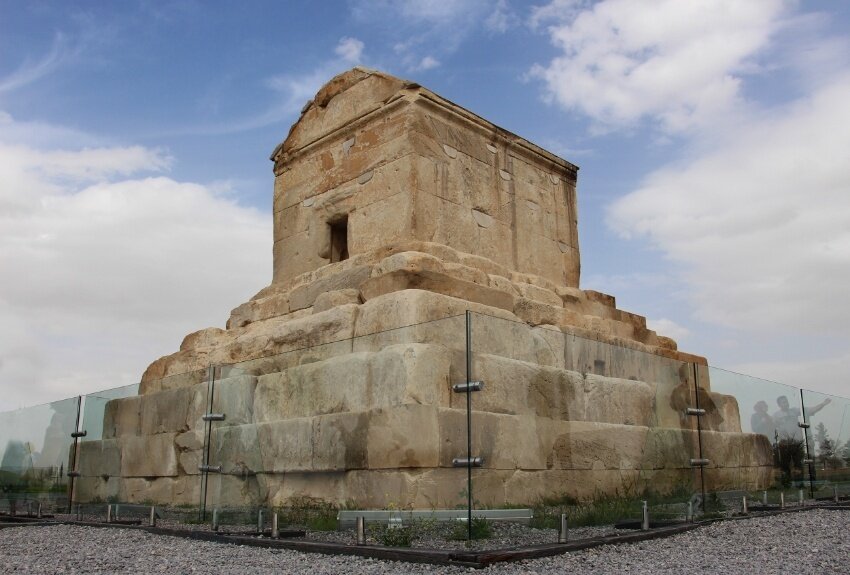Center to preserve historical water structures established in Pasargadae
Published on by Water Network Research, Official research team of The Water Network in Case Studies
TEHRAN – A center for preserving and monitoring the historical water structures of the UNESCO-tagged Pasargadae has been established near the ancient Bostankhani Dam in Fars province, southern Iran.
Situated in about 50 km north of Persepolis, Pasargadae embraces outstanding examples of the first phase of royal Achaemenid art and architecture and exceptional testimonies of Persian civilization.
Cyrus was the founder of the Achaemenid Empire (c. 550 – 330 BC) which at its greatest extent stretched from the Balkans to the Indus Valley, spanning 5.5 million square kilometers. The Persian king declared the world’s first charter of human rights, also known as the Cyrus Cylinder.
The newly established center aims at protecting the water structures of the UNESCO-tagged site, which are always threatened by unauthorized agricultural and civil activities as well as illegal excavations, the official website of the site announced on Wednesday.
The historical water structures include seven Achaemenid dams and water supply networks with a length of nearly eighty kilometers, which are scattered in the plains in the area.
The UNESCO World Heritage site is also home to a complex water supply system for the time that comprises cisterns, tunnels, underground canals, and ducts, which are locally known as qanats.
It is believed that the development of qanats began about 2,500 or 3,000 years ago in Persia (Iran), and the technology spread eastward to Afghanistan and westward to Egypt. Although new qanats are seldom built today, many old qanats are still used in Iran and Afghanistan, chiefly for irrigation.
The concept of “Persian Qanat” was registered on the UNESCO World Heritage list in 2016, representing eleven aqueducts across Iran. According to the UN cultural body, the qanat provides exceptional testimony to cultural traditions and civilizations in desert areas with an arid climate.
Each qanat normally comprises an almost horizontal tunnel for collecting water from an underground water source, usually an alluvial fan, into which a mother well is sunk to the appropriate level of the aquifer.
Some 120,000 qanats - ancient subsurface water supply systems – are documented across Iran, and nearly 37,000 of which are still in use in the country, according to data provided by Iran’s cultural heritage body in 2018.
The Shushtar Historical Hydraulic System and the ancient water ducts of the UNESCO-tagged Persepolis in southern Iran are also the other examples for the unique and flawless engineering, architecture, urban planning, construction technology, and art of the Achaemenid era.
Inscribed on the UNESCO World Heritage list in 2009 as a ‘masterpiece of creative genius’, the Shushtar Historical Hydraulic System is a destination for history buffs, nature lovers, and travelers who eyewitness how the prehistoric yet homogeneous hydraulic system works.
“The Shushtar Historical Hydraulic System testifies to the heritage and the synthesis of earlier Elamite and Mesopotamian knowhow; it was probably influenced by the Petra dam and tunnel and by Roman civil engineering,” UNESCO says.
Taxonomy
- Storage Tank
- Water Storage
- Hydrology
- Geo-hydrology
